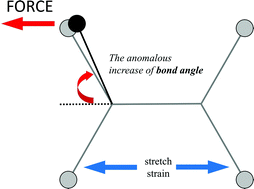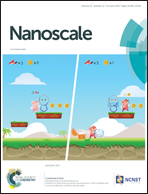Origin of anisotropic negative Poisson's ratio in graphene†
Abstract
Negative Poisson's ratio (NPR) in auxetic materials is of great interest due to the typically enhanced toughness, shear resistance, and sound and vibration absorption, which enables plenty of novel applications such as aerospace and defense. Insight into the mechanism underlying NPR is significant to the design of auxetic nanomaterials and nanostructures. However, the analysis of NPR in previous studies mainly remains on the level of the evolution of geometry parameters, such as bond length and bond angle, while a thorough and fundamental understanding is lacking. In this paper, we report anisotropic differential NPR in graphene for uniaxial strains applied along both zigzag and armchair directions based on first-principles calculations. The mechanism underlying the emergence of NPR in graphene (evolution of bond length and bond angle) is found to be different from the conclusions from previous classical molecular dynamics simulations with empirical potential. We propose that the decentralized electron localization function (ELF) driven by strain leads to ELF coupling between different types of bonds, which results in the counter-intuitive anomalous increase of the bond angle and thus the emergence of NPR in graphene. Moreover, the NPR phenomenon can be anticipated to emerge in other nanomaterials or nanostructures with a similar honeycomb structure as that of graphene, where the ELF coupling would also be possible.



 Please wait while we load your content...
Please wait while we load your content...